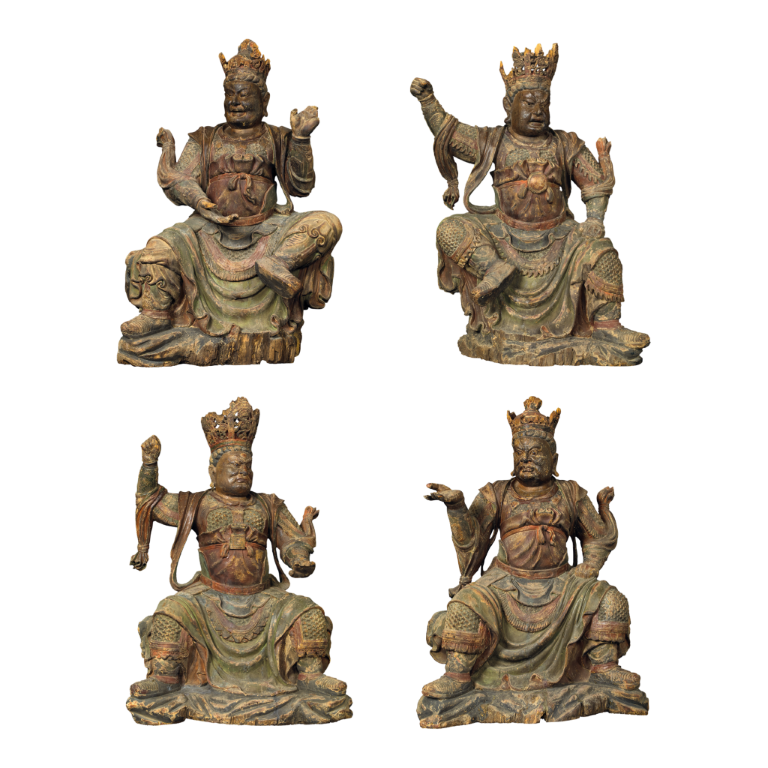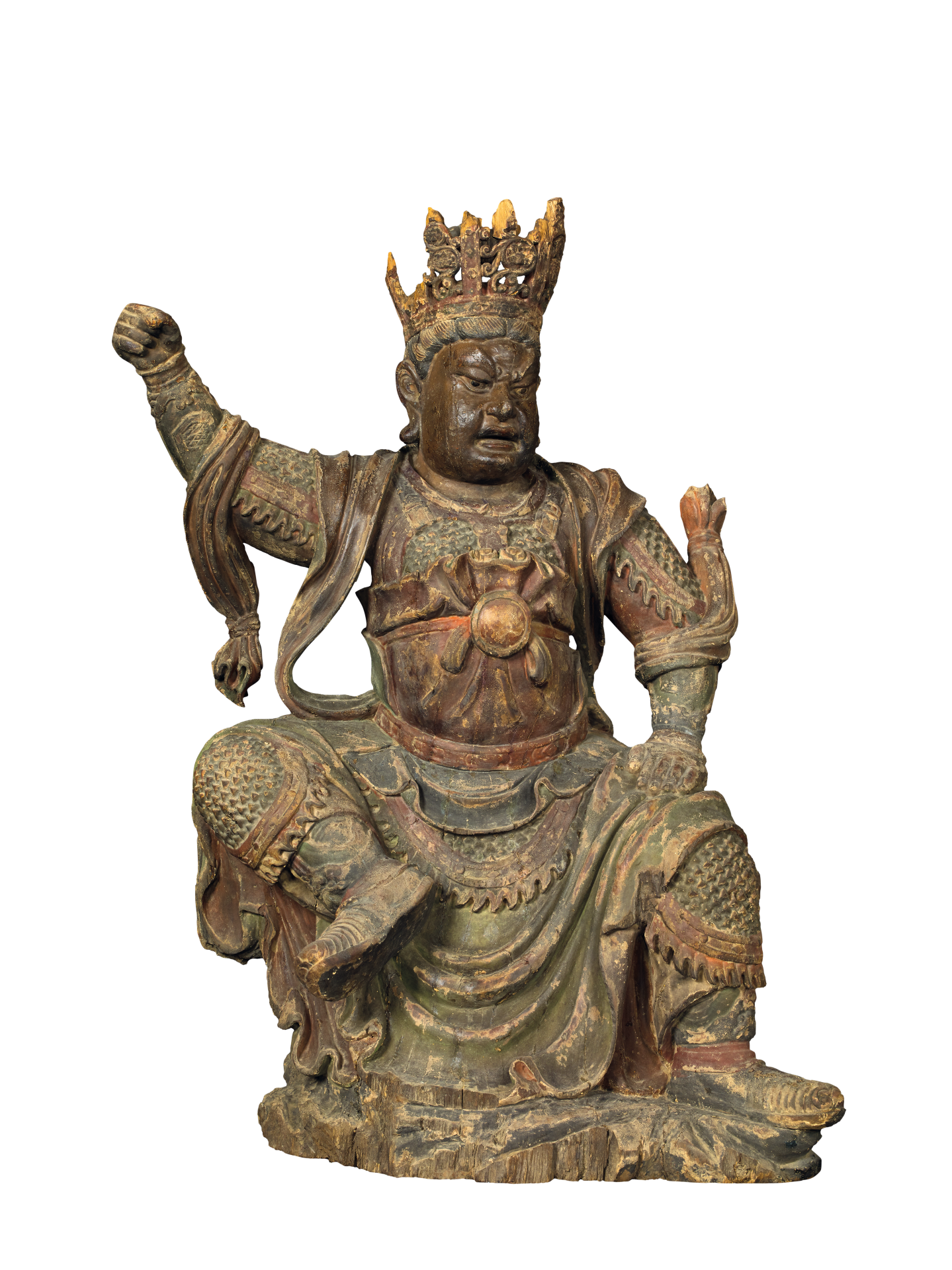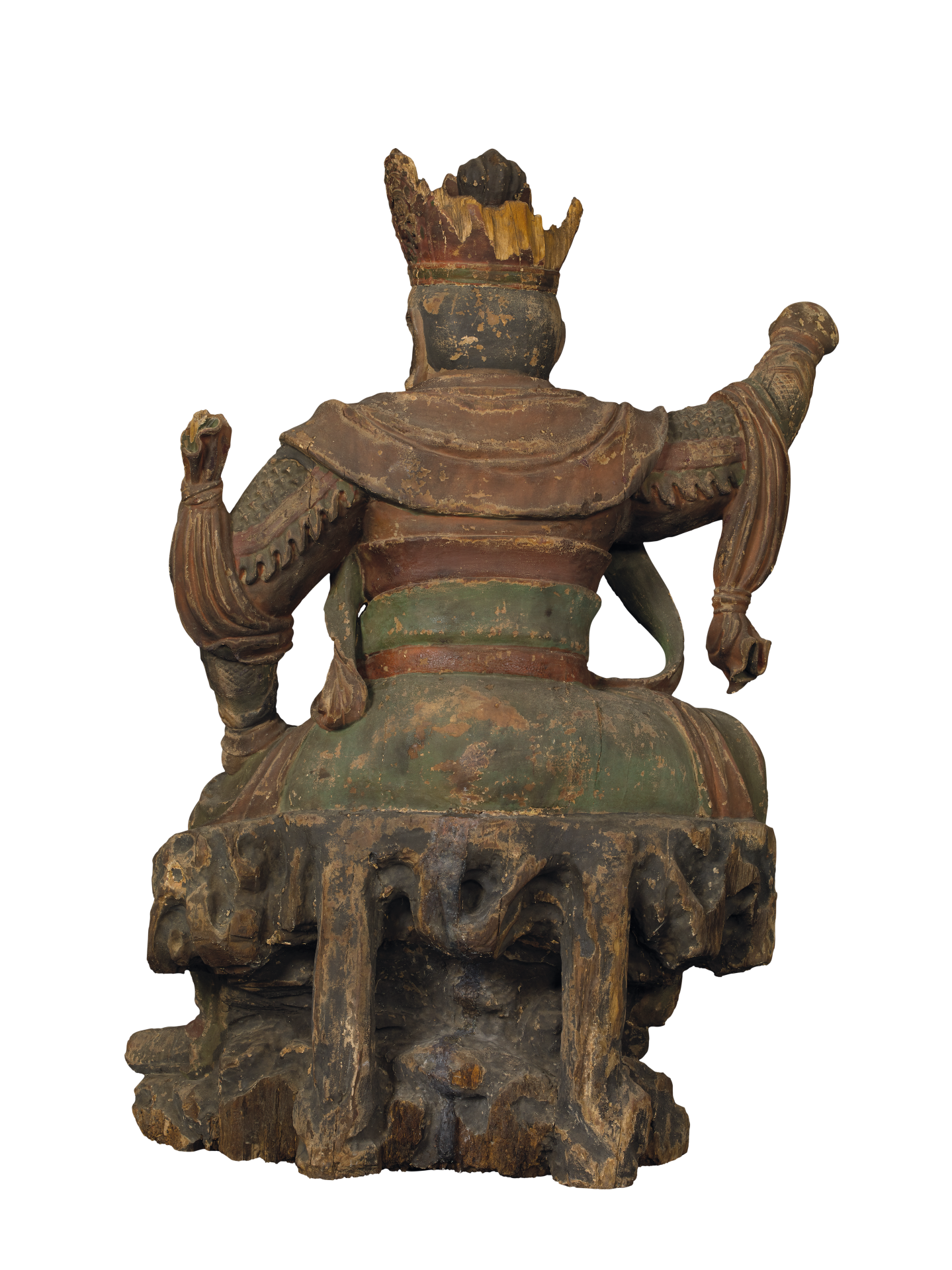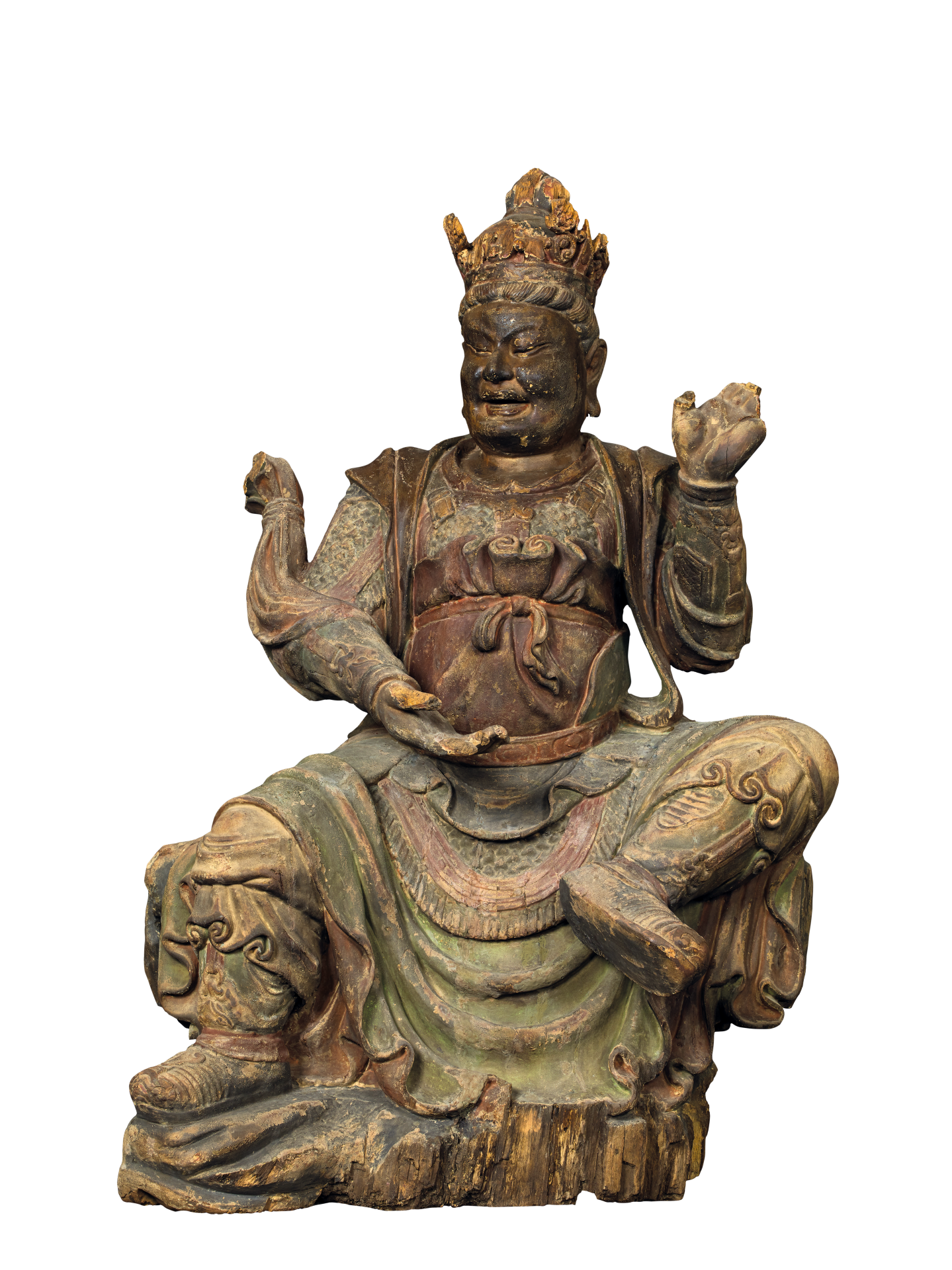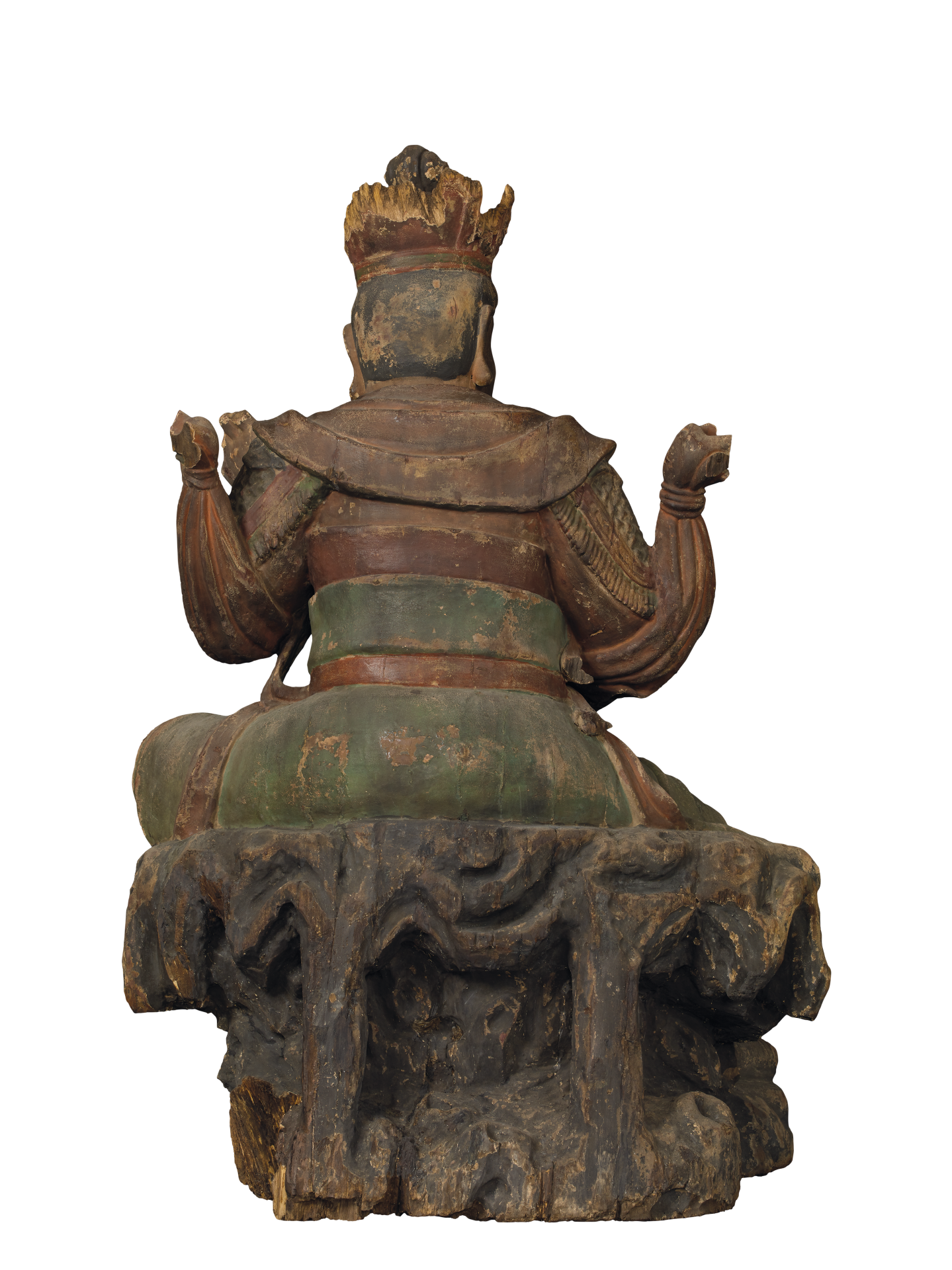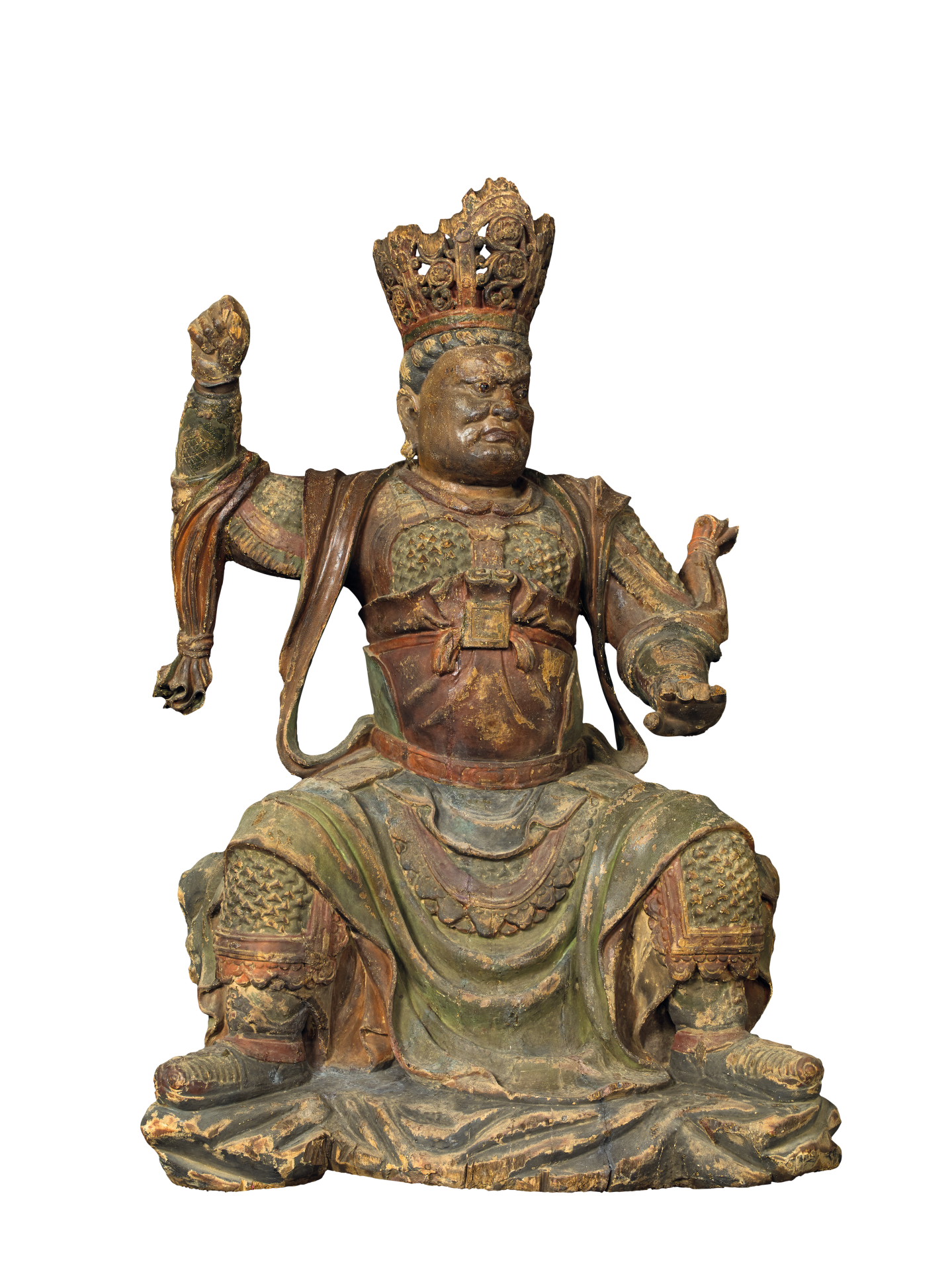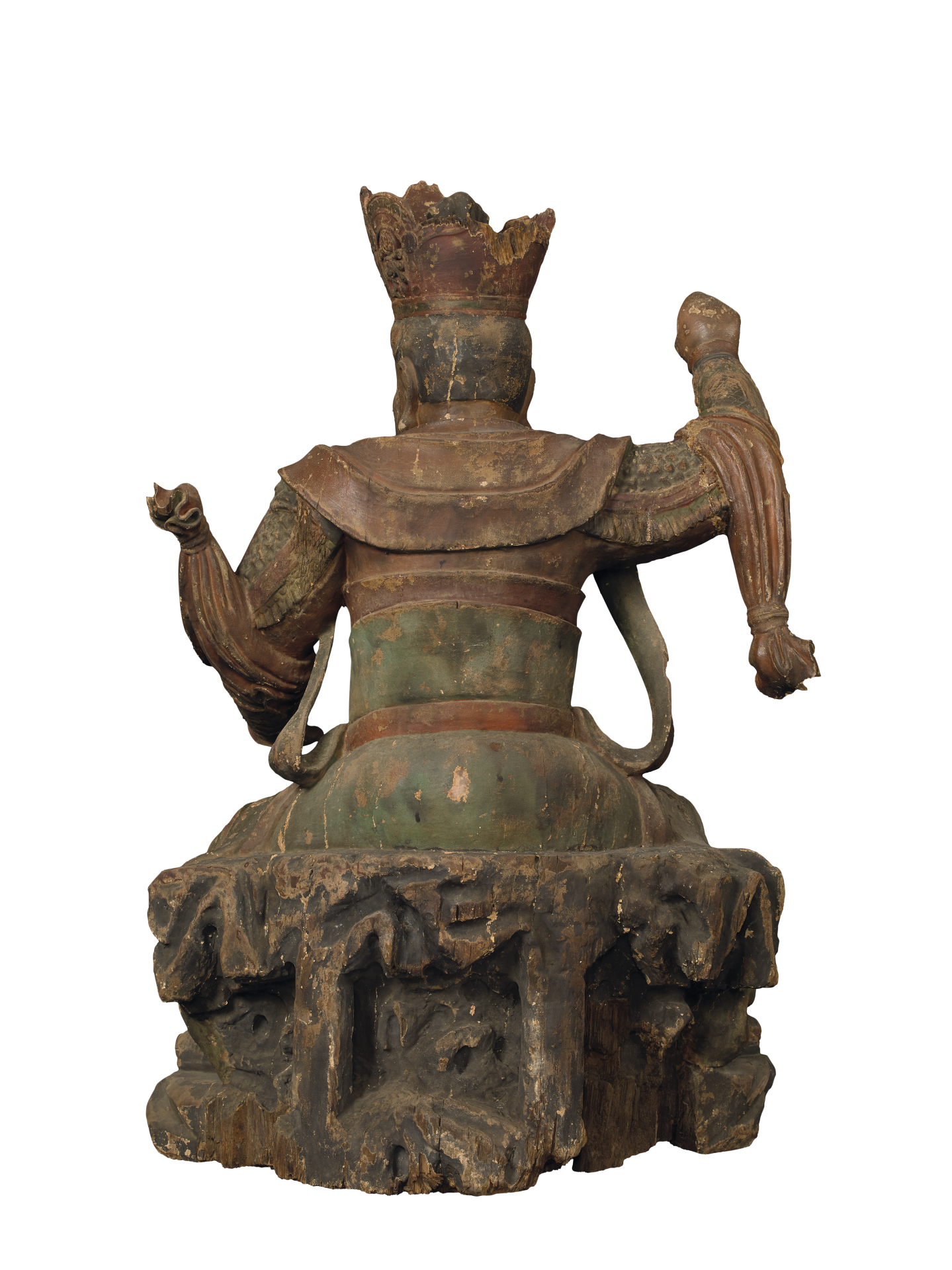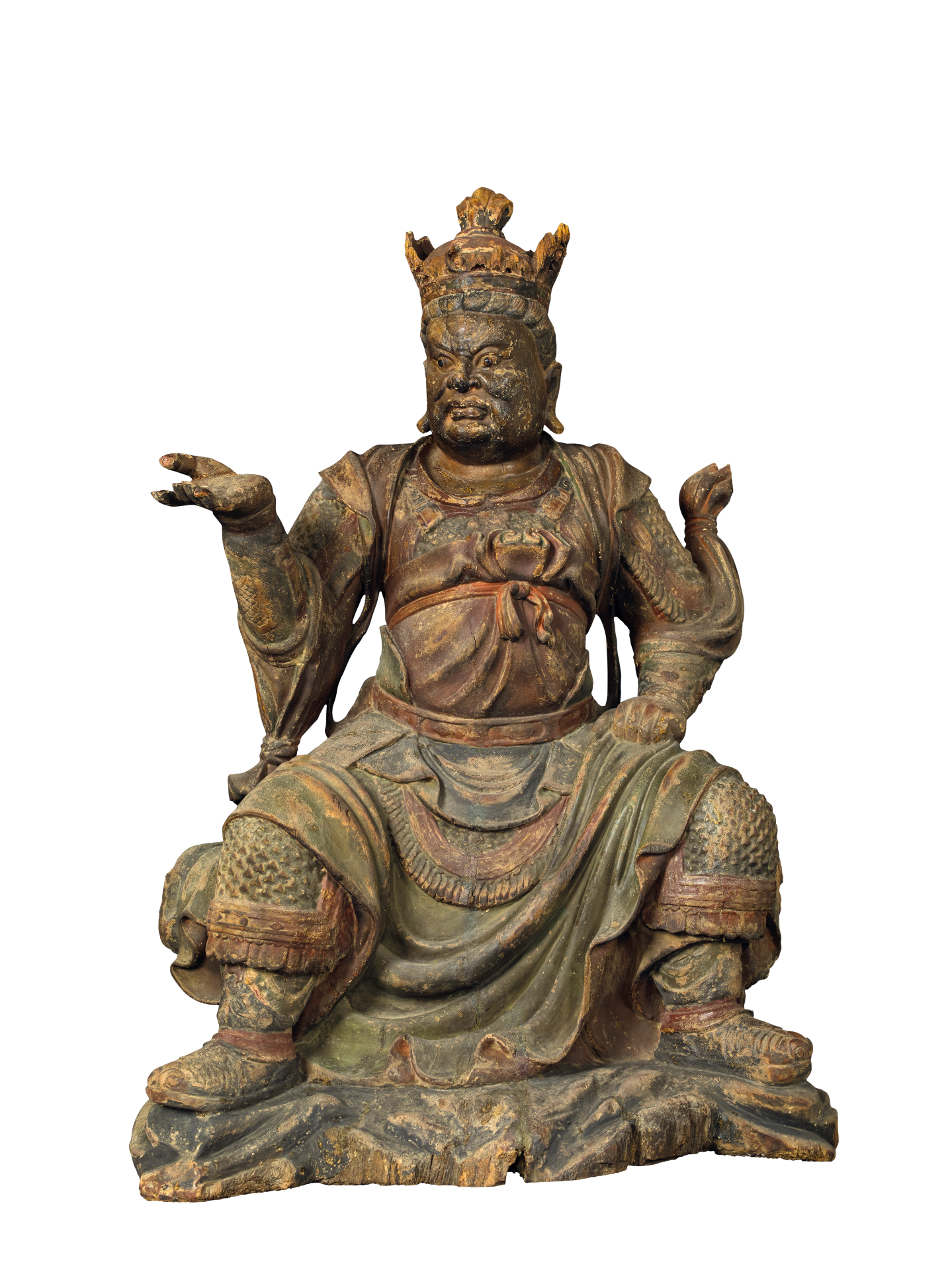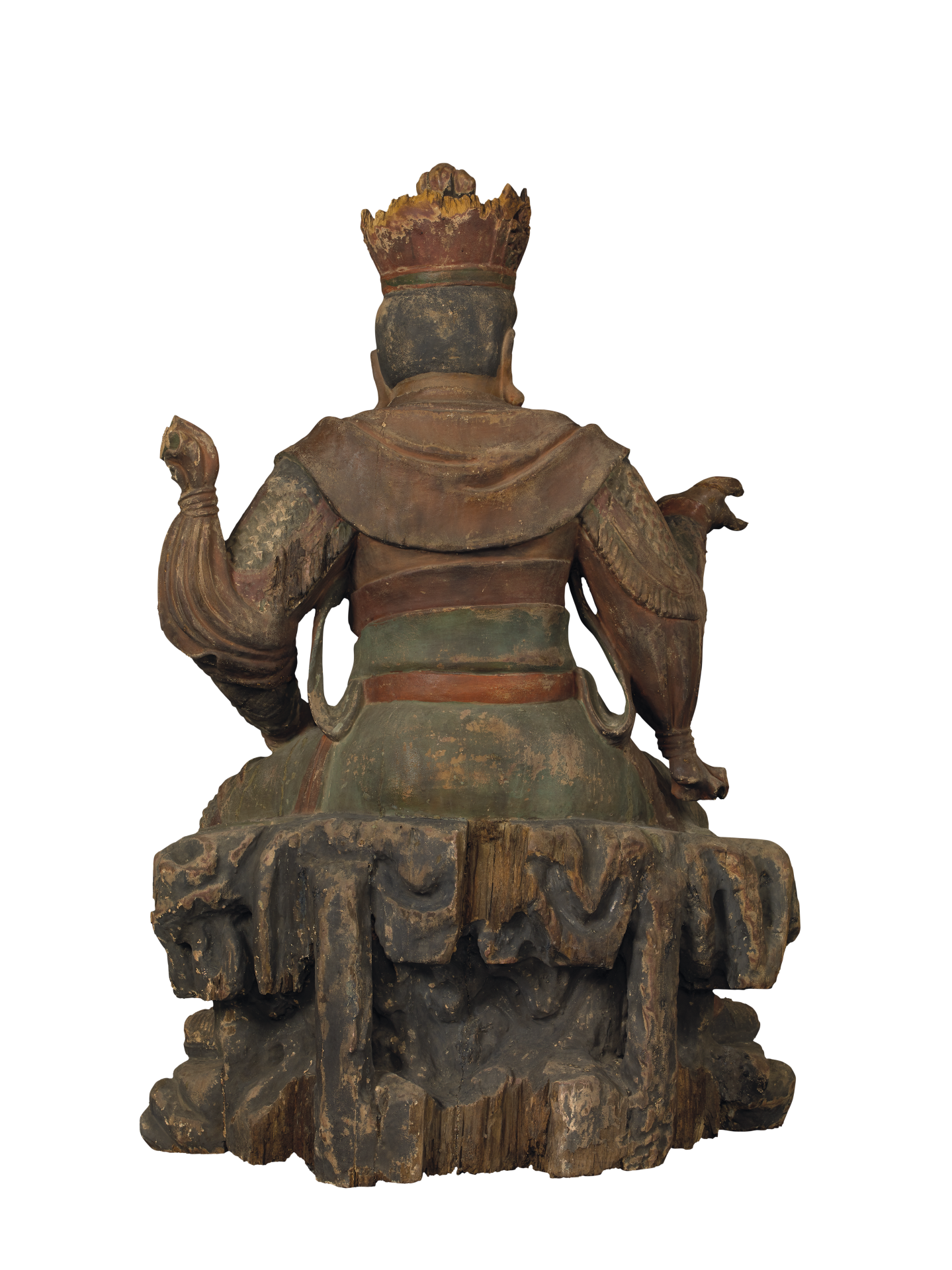Four Seated Heavenly Kings
The Four Heavenly Kings (Lokapāla) are important Dharma protectors in the Buddhist pantheon. According to Buddhist literature, the lower slopes of Mount Sumeru are surrounded by four continents respectively resided by the Four Heavenly Kings and their retinues. These Heavenly Kings are Vaiśravaṇa of the North, Dhṛtarāṣṭra of the East, Virūḍhaka of the South and Virūpākṣa of the West. Their duty is to watch over their own domain, keep monthly vigilance on the kings, ministers, common people, Nāgas and other spirits; and protect the Buddhist worlds in the four quadrants.
Tang (618-907 CE) and post-Tang images of Heavenly Kings, like what we see today, are typically represented as warriors. The attributes held in their hands varied on earlier images. From the Yuan dynasty (1271-1368) onward, the banner, the pipa-lute, the sword and the snake-cord were designated the respective attributes of the Heavenly Kings of the North, the East, the South and the West. In later folk literature, these four attributes or their variations were associated with the auspicious phrase fengtiao yushun, “timely wind and rain”, which was vital to an agricultural society. These four deities were therefore venerated as guardian deities of the nation.
Each of the Four Heavenly Kings portrayed in this group of Ming dynasty (1368-1644) statues has a topknot surrounded by a tall crown carved in openwork with lotus borne on entwining stalks; an oblong face, high-relief facial features, powerful muscles, rich facial expressions, fierce bulging round eyes, a broad short nose, and thick lips. Their awe-inspiring images are able to scare off all evils. They are all attired in an armour suit furnished with knee guards and wrist guards. A shawl goes around their shoulders and arms. Each is seated majestically on a mass of mountain rock. Their robust solid build and stout limbs bespeak monumentality. The drapery runs in different directions, with folds carved in the round. Despite seated squarely, the figures with unstirred or waving arms impart a strong sense of motion and an air of formidable power.
